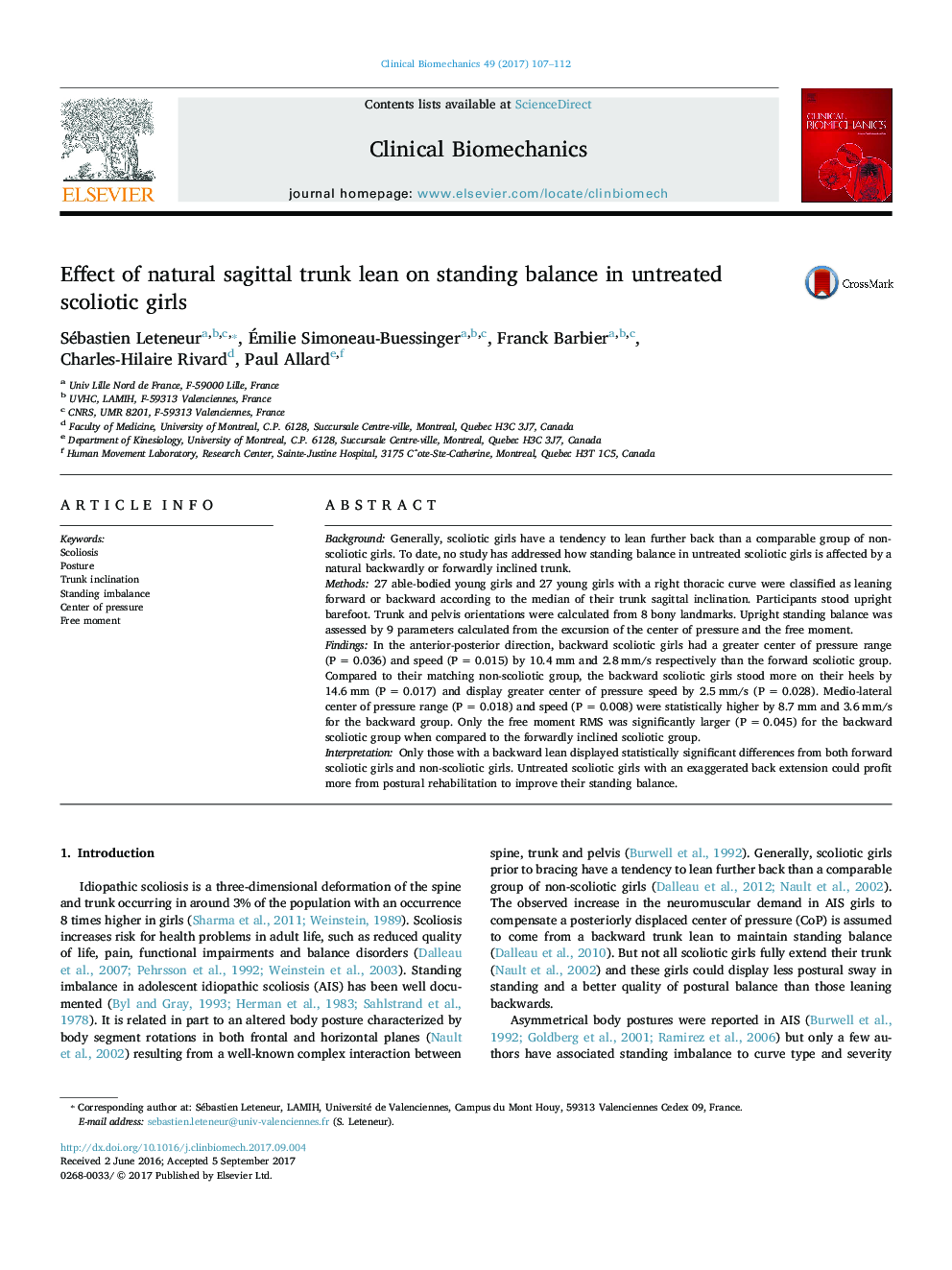| Article ID | Journal | Published Year | Pages | File Type |
|---|---|---|---|---|
| 5706971 | Clinical Biomechanics | 2017 | 6 Pages |
â¢27 able-bodied and 27 scoliotic girls were classified as leaning forward or backward.â¢Backward scoliotic girls displayed a greater standing imbalance than the forward ones.â¢Backward scoliotic girls stood more on their heels than backward able-bodied girls.â¢Backward scoliotic girls could profit more from postural rehabilitation.
BackgroundGenerally, scoliotic girls have a tendency to lean further back than a comparable group of non-scoliotic girls. To date, no study has addressed how standing balance in untreated scoliotic girls is affected by a natural backwardly or forwardly inclined trunk.Methods27 able-bodied young girls and 27 young girls with a right thoracic curve were classified as leaning forward or backward according to the median of their trunk sagittal inclination. Participants stood upright barefoot. Trunk and pelvis orientations were calculated from 8 bony landmarks. Upright standing balance was assessed by 9 parameters calculated from the excursion of the center of pressure and the free moment.FindingsIn the anterior-posterior direction, backward scoliotic girls had a greater center of pressure range (PÂ =Â 0.036) and speed (PÂ =Â 0.015) by 10.4Â mm and 2.8Â mm/s respectively than the forward scoliotic group. Compared to their matching non-scoliotic group, the backward scoliotic girls stood more on their heels by 14.6Â mm (PÂ =Â 0.017) and display greater center of pressure speed by 2.5Â mm/s (PÂ =Â 0.028). Medio-lateral center of pressure range (PÂ =Â 0.018) and speed (PÂ =Â 0.008) were statistically higher by 8.7Â mm and 3.6Â mm/s for the backward group. Only the free moment RMS was significantly larger (PÂ =Â 0.045) for the backward scoliotic group when compared to the forwardly inclined scoliotic group.InterpretationOnly those with a backward lean displayed statistically significant differences from both forward scoliotic girls and non-scoliotic girls. Untreated scoliotic girls with an exaggerated back extension could profit more from postural rehabilitation to improve their standing balance.
